Harbhajan Singh Plaha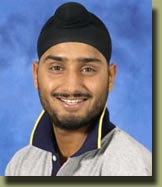 Harbhajan made his Test and One Day International entrances in early on 1998. His job was at the start inundated by analysis into the legality of his bowling act and corrective incidents that heaved the bile of cricket establishment. Still in 2001, with foremost leg spinner Anil Kumble wounded, Harbhajan's job was revived after Indian Skipper Sourav Ganguly called for his insertion in the Border-Gavaskar Trophy side. In that sequence triumph over Australia, Harbhajan recognized himself as the squad's foremost spinner by taking 32 wickets, becoming the first Indian bowler to take a hat trick in Test cricket. 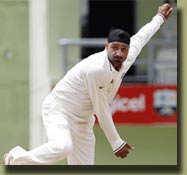 He was granted the Padma Shri, India's fourth maximum civilian honor, in 2009. Early years and personal lifeHarbhajan was born into a center class Punjabi Ramgarhia Sikh folks. He is the only son of Sardar Sardev Singh, a manufacturer who possessed a ball bearing and valve factory. Increasing up with five sisters, Harbhajan was in line to come into the family business, but his father persisted that he concentrates on his cricket job and symbolized India. Harbhajan was skilled as a batsman by his first Coach Charanjit Singh Bhullar, but renewed to twist bowling after his coach's premature death saw him turn to the protection of Davinder Arora. Arora acclaims Harbhajan's triumph to a work ethic that included a three hour training conference in the sunrise, pursued by an afternoon conference eternal from 3 pm in anticipation of after sunset. In a realm where cricketers are admired, Harbhajan's performances have brought him control tributes and profitable sponsorships. Subsequent his performance in opposition to Australia in 2001, the Government of Punjab awarded him Rs 5 lakhs, a contrive of land, and a tender to become a Deputy Superintendent of Police in Punjab Police, which he received. One of his common nicknames, external India, is The Turbanator, obtaining from his talent as a bowler in ceasing the innings of the opposing squad, and the truth that, as a Sikh, he bears a black turban on every occasion he plays. Amid Indians, Harbhajan is more frequently recognized as bhajji. It was anticipated in 2005 that Harbhajan was the most renowned and commercially doable Indian cricketer after Sachin Tendulkar, in part owing to his colorful traits and iconic turban, as well as his status for benefitting from the famous person communal sight. His marking for English county side Surrey in 2005, founded at The Oval in London, was fairly accredited to his marketability. Harbhajan had spawned a huge personal subsequent in the western London community of Southhall, which swanks a mass Punjabi Sikh population, when he survived there in 1998 even as training under Fred Titmus. In 2006, Harbhajan's supports generated argument when he appeared devoid of his turban in an announcement for Royal Stag whisky. This incensed many traditional Sikhs, leading to anti-Harbhajan protests in the Sikh holy city of Amritsar, with statues of Harbhajan being scorched. The Sikh clergy and Shiromani Gurdwara Prabandhak Committee stipulated an admission of guilt from him and asked Seagram's to extract the advert, on the foundation that it had "hurt the thoughts of Sikhs". Harbhajan rapidly issued a defense, but he was also gloomy at the clergy's hindrance, stating "If they were unhappy, they should have called me and talked to me like a son". International exileAfter taking eight wickets in his subsequent two Ranji games, Harbhajan was elected to visit Australia in 1999-2000, as the second spinner. He did not take part in the Tests, with India picking to field only Anil Kumble in the squad. Australia whitewashed India 3-0, and Harbhajan resisted in his only first-class outing in opposition to Tasmania, taking 0/141, a presage of future unproductive visit to Australia.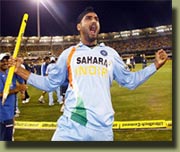 In mid-2000, an occasion arose when Harbhajan was selected in the first group of trainees sent to the National Cricket Academy to learn under Erapalli Prasanna and Srinivas Venkataraghavan, two off spin bowlers from the Indian spin group of four of the 1970s. On the other hand, his deeds did not be conventional to necessities, and he was debarred on corrective grounds. His funding job with Indian Airlines was also appraised as an effect of his unruliness. Harbhajan later on divulged that he had been at mistake former in his career. Subsequent his run-ins with Indian cricket supervisors, there was nothing to designate that Harbhajan's odds of national choice had enhanced at the start of 2000-01. In spite of Kumble being injured, Harbhajan was another time unnoticed as Kartik, Sunil Joshi, and debutant Saran deep Singh were delegated with the spin bowling responsibilities in Test games in opposition to Bangladesh and Zimbabwe on the subcontinent. Having made little victory in this point of his international career, averaging 37.75 per Test wicket to date, and unnoticed by selectors, Harbhajan looked a difficult decision. His father had recently died; as the family's only son, Harbhajan was now gratified to support his mother and unmarried sisters. He considered quitting cricket and moving to the United States to make trucks for a living. After being out of the team for more than 12 months, there was little overt warning of the sudden rise that would transpire in his cricketing career only a few months later on. For the duration of the first half of the season, tranquil in international banish, Harbhajan persistent to select up wickets on the home circuit. In five Ranji Trophy games, he stated 28 wickets at 13.96. He argued 3/29 and 3/39 in opposition to Himachal Pradesh, 2/53 and 5/88 in opposition to Jammu and Kashmir, 4/77 and 2/33 in opposition to Haryana and 5/40 beside Services in the first four games, all of which wrecked in innings wins for Punjab. He then took a sum of 4/32 in a 199-run win over Delhi. Harbhajan's batting, which had infrequently been dynamic up to this point in his career, also enhanced. He attained a career-best 84 in opposition to Haryana and added 52 beside Services, aggregate 207 runs at 51.75. After taking eight wickets at 21.12 in six one-dayers, Harbhajan was preferred for North in the Duleep Trophy, but his early-season form abandoned him. He took five wickets at 39.00 in two games, even though he did maintain his dynamic run with the bat, scoring 130 runs at 32.50 with three scores beyond 35. Playing style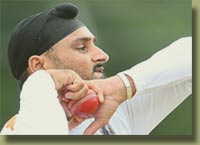 He has enlarged an capacity to bowl the doosra, which was the issue of an executive report by game referee Chris Broad on-field umpires Aleem Dar and Mark Benson, and TV umpire Mahbubur Rahman after the Second Test stuck between India and Bangladesh at Chittagong, Bangladesh in December 2004. The ICC cleared his stroke in May 2005, saying that the flattening of his nudge fell in the allowed confines. Amongst off spinners, Harbhajan is the second highest wicket-taker in Test history, after Muttiah Muralitharan of Sri Lanka. He is the third-highest Test wicket-taker amongst all Indians. Harbhajan standard with the ball in home Test contests lingers in the mid-20s. All five of his man of the match awards and both of his man of the sequence awards have been gained in India. On the outside of India, his bowling standard mounts to about 40. Statistically, his bowling in Test games is most efficient in opposition to the West Indies and Australia. As of May 2008, his most prolific tracking grounds have been Eden Gardens in Calcutta, where he has taken 38 wickets at 23.10 in six Tests, whilst the Chepauk in Chennai, where he has asserted two man of the match awards, has yield 34 wickets at 24.25 in five Tests Harbhajan has alleged his wickets most reasonably at Wankhede Stadium in Mumbai, where he has taken 22 wickets at 19.45.Balanced to Muralitharan, Harbhajan is less contingent on aiming the stumps for his discharges; he detains more than 60% of his wickets via catches and less than 25% by bowling or ambushing batsmen leg before wicket, while the equivalent figures for Muralitharan are in the 40s. Harbhajan's off spin harmonizes Kumble's leg spin. Whereas Harbhajan is famous for his expressive and overenthusiastic celebrations, which are ingredient of an intentional policy of hostility, Kumble is recognized for his restrained and poised loom. Both spinners have opined that they bowl more in fact in bike through determined submission of force to batsmen, but statistics have shown that whereas Kumble has executed superior when opposite with Harbhajan, Harbhajan has been more valuable in Kumble's lack. Harbhajan has been chiefly flourishing in opposition to Australian batsman Ricky Ponting, taking his wicket on ten occasions in Test cricket. 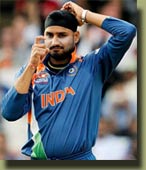 Batting and fielding averages
Bowling averages
|

Common Games Of India || History Of Games& Sport || Pre School Games || School Games || Games For Girls & Women || Team Games

